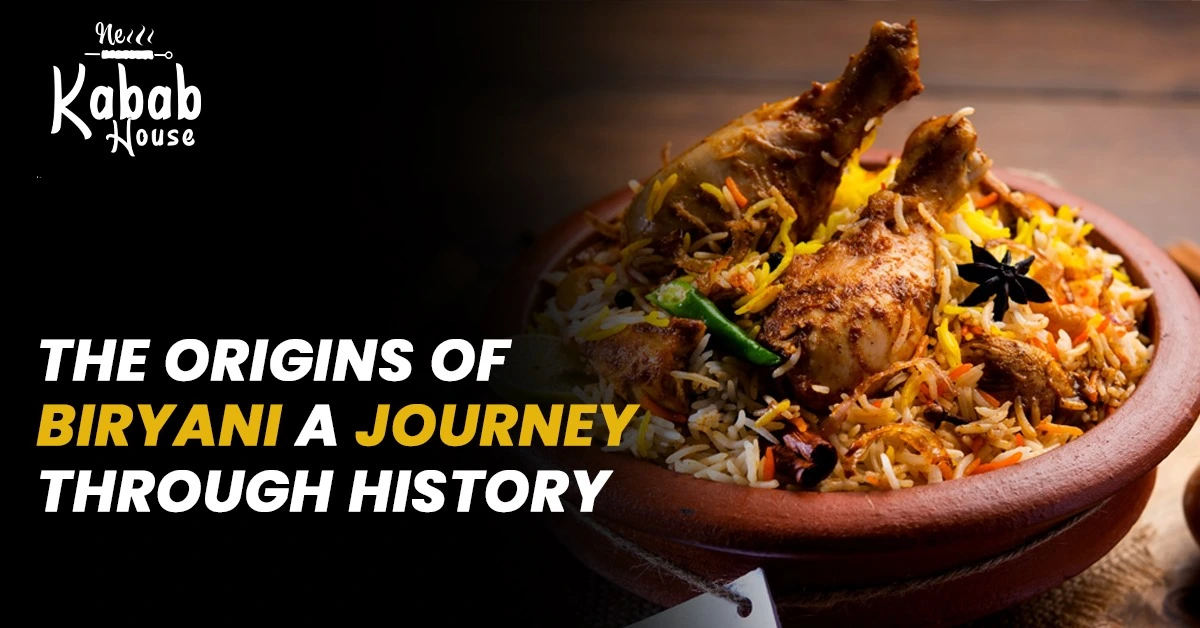
Blog
The Origins of Biryani – A Journey Through History

Biryani is a name that recalls at once the picture of a delicious, aromatic dish, eaten by millions worldwide. But why so? The Origins of Biryani: A Journey Through History is your guide to a journey of remembrance over the centuries, tracing the cultural and culinary history of one of the world’s most popular foods. From its regal origins to where it stands today in the culinary world, we delve into the history of biryani and how it came to be. Are you ready to immerse yourself in its flavor-saturated past?
The Birth of Biryani: From Persia to India
The history of biryani is usually credited by different people, but historians mostly believe that the biryani originated in Persia. The word “biryan” in Persian refers to “to fry” or “to roast,” and from this word the name “biryani” is derived. The biryani was brought into India by the Mughal rulers in the 16th century. Persian soldiers, and their imperial chefs, created early versions of biryani as a method of cooking well-proportioned, well-balanced one-pot meals during long marches. Meat, rice, and spices mixed together was the ideal solution to satisfy large armies of soldiers.
When the Mughals arrived in India, they did not just bring their passion for grilled meat but a passion for spices as well. They spiced up local ingredients with spices beautifully. Out came the mouth-watering, fragrant biryani known and loved today.
Biryani in Mughal India – A Royal Affair
As the Mughal Empire widened, so did the popularity of bollywood actresses commonly referred to as biryani. It soon became a standard as a royal dish and was being served at lavish soirees and banquets on a regular basis. The kitchen staff of the king in North India specifically cooked the dish of biryani. The chefs began adding a mixture of spices, herbs, and saffron to cook the dish, and it became not only a dish but also an experience for the senses. Hyderabadi Biryani, the epitome of India’s renowned cuisine, which uses this unique technique of dum cooking, is Mughlai in origin, in which meat and rice, independently marinated, are gradually cooked together in a sealed utensil in an effort to impart flavor in the food.
Mughal court biryani was generally prepared with lamb, mutton, or chicken, marinated with spices and yogurt, garam masala, cumin, and cardamom flavored, and cooked with basmati of long grain. Ingredients and technique would have been regional, but the make was one and the same – rich beyond measure, aromatic rice filled with meat and spice layers.
The Global Movement of Biryani – Local to Global
Biryani these days is not the exclusive prerogative of Indian or Persian royal courts; it’s a global culinary phenomenon. Wherever Indian diaspora settled in every nook and corner of the world, biryani accompanied them to home and restaurant as well. Each country added its own flavor to the dish – from fiery potato-based Kolkata Biryani to coconut Malabar Biryani of Kerala. Even in America, people have come to adore biryani, and it’s possible to find restaurants across the country offering their versions of this international dish.
In cities like Windsor, enthusiasts stand outside biryani restaurants, looking to enjoy the flavor and texture of spice. Maybe it’s spicy Hyderabadi biryani with extra spices or mild Lucknowi biryani – there’s a biryani to suit all. To others, it’s a dish bigger than the meal – a symbol of heritage, tradition, and history handed down through generations.
Frequently Asked Questions (FAQs)
Q: What is Biryani?
Biryani is rice cooked with spices, wherein the rice is flavored by using aromatic spices, normally basmati rice, marinated meat (lamb, chicken, or beef), and spices.
Q: Where did Biryani originate?
Biryani was brought to India by Persia through the Mughal emperors. Over time, it developed different regional variations with each culture adding its own unique spices and ingredients.
Q: Why is Biryani special?
The combination of basmati long-grain rice, braised meat, and pungent spices gives layers of flavor which result in a memorable meal that is biryani.
Q: How is Biryani prepared?
Biryani is generally made by layering marinated meat and half-cooked rice, and then cooking them jointly for long, normally using a method called dum cooking, where the pan is sealed so that all the amount of flavor is preserved.
Q: Is Biryani vegetarian?
Yes, there are enough vegetarian biryanis made using vegetables, paneer, or tofu. They are as good and satisfying as meat ones.
Conclusion
The History of Biryani: A Journey Through Time is a reminder that it’s not just something you eat – it’s a taste, a history, and a celebration of culture. Windsor to the edge of the world, biryani provides a flavor of heritage and tradition. New Kabab House invites you to taste the journey of biryani for yourself.
Why Choose Us
We at New Kabab House are dedicated to presenting you old-fashioned, spiced biryani the way ancients had dreamt of. With grain-long basmati rice at its optimum performance, lovingly cooked marinated meat, and a presence of perfumed spices, we prepare a biryani that carries you back in time with every mouthful. Your imperial Hyderabadi or spicy Kolkata way, we prepare every dish with love, originality, and best ingredients.
Want to relish real Biryani? Visit the New Kabab House today! Our chefs present every dish with the best ingredients and traditional techniques. Call and order now or visit and have lunch/dinner with us in Windsor and enjoy the richness and zing of this signature dish.
